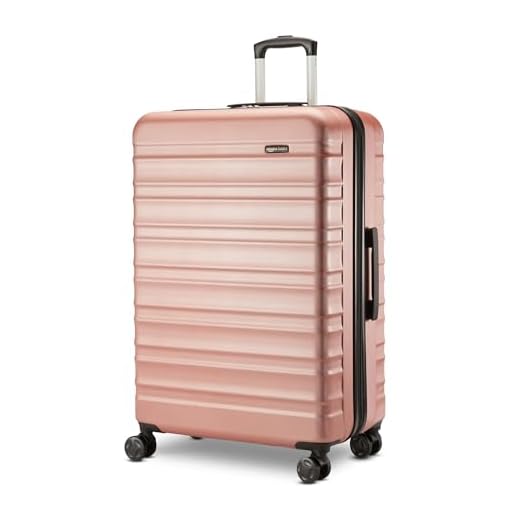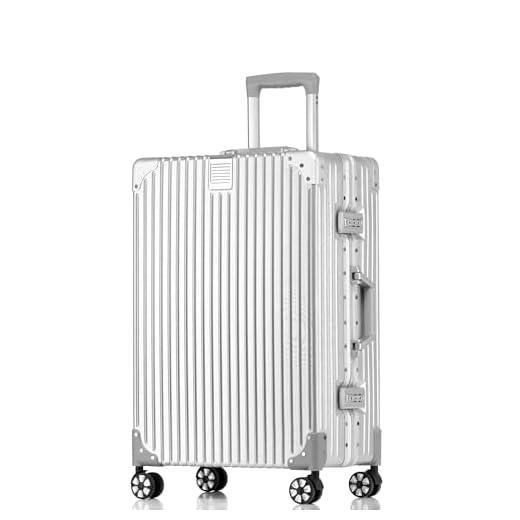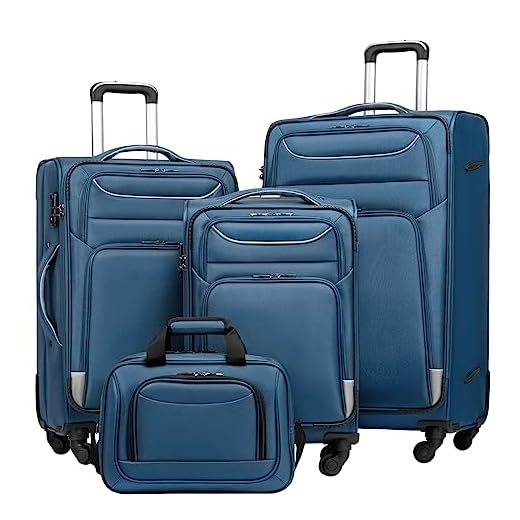





Short answer: Choose Rimowa Classic or Original aluminum models for frequent air travel: price $800–1,600; weight ~3.5–4.5 kg depending on model and size; warranty 5 years; worldwide repair centers and strong resale value. Aluminum shell absorbs and redistributes concentrated impact better than polycarbonate; riveted hinge construction allows component repair instead of full replacement.
Value pick: Samsonite hard-shell lines span $100–400; typical cabin weight 2.5–3.5 kg; polycarbonate shells deform under impact rather than crack, lowering chance of catastrophic failure. Travelpro crew-oriented soft-side designs focus on load-bearing stitching, ballistic fabrics and lifetime limited warranty on many lines, making them ideal for heavy checked use.
Business travelers: Tumi ballistic-nylon and composite-shell models emphasize organization and security: price range $400–1,200; modular pockets and dedicated laptop compartments reduce airport friction. Away direct-to-consumer carry-ons cost roughly $225–295, include easily replaceable wheels and handles, plus a 100-day trial in many markets.
Carry-on compliance metrics: US domestic carriers often limit cabin case to 22 x 14 x 9 inches (56 x 36 x 23 cm); many international carriers set 55 x 40 x 23 cm. Aim for internal volume ~35–40 L for cabin units, 60–90 L for checked pieces. Wheel count matters: 4 spinners maximize maneuverability in crowded terminals; 2-wheel roller systems track better over rough surfaces. Weight target for cabin items: under 4 kg to simplify overhead handling.
Recommendation by use-case: for maximum durability and long-term value choose aluminum Rimowa; for cost-efficiency and wide selection choose Samsonite; for business organization select Tumi; for crew-style reliability choose Travelpro; for streamlined design and easy repairs choose Away. Prioritize shell material, warranty terms, wheel quality and handle robustness when comparing options.
Hard-shell suitcases that survive repeated checked-baggage abuse
Choose aluminum-shell models for repairability and long-term survival: Rimowa Classic and Tumi 19 Degree use riveted construction, replaceable corner guards, and manufacturer repair centers across multiple regions.
For impact absorption and weight savings, select Curv-based or high-grade polycarbonate shells such as Samsonite Cosmolite and Away polycarbonate Carry-On; Curv composite flexes under blunt force to prevent catastrophic cracking, and independent drop tests report far fewer fractures versus standard ABS after repeated impacts.
Prioritize construction details: full-length aluminum frame or robust inner-frame, dual-tube telescoping handle with metal reinforcement, sealed-bearing spinner wheels, recessed zipper or integrated TSA lock, reinforced corner ribs, and user-replaceable wheel modules; warranty length and on-demand parts availability directly extend service life, so favor lifetime or long-term coverage where offered.
Maintenance that prolongs service: inspect wheel housings and rivet points after every checked trip, tighten loose fasteners, replace worn wheels before failure, remove grit and salt from exterior seams, and pack soft items against hard-shell walls to limit concentrated internal impact.
For very frequent checked travel (50+ flights per year) favor Rimowa Classic Aluminum for straightforward repairability and parts support, or Samsonite Cosmolite for exceptional crack resistance with low mass; for moderate checked use consider Monos, Tumi polycarbonate series, or Briggs & Riley hard-shell options paired with strong warranties and accessible repair programs.
Lightest carry-on under 7 kg for strict weight limits
Recommendation: opt for ultralight soft-carry backpacks or thin-shell spinners with empty weight under 3.0 kg; top practical picks include Osprey Farpoint 40 (approx 1.4 kg), CabinZero Classic 44L (approx 0.9 kg), Monos Carry-On 22″ (approx 3.0 kg), Delsey Chatelet Airlight 55cm (approx 2.9 kg).
Weight budget guidance: with a 7 kg allowance reserve ~1.0–1.5 kg for personal item plus liquids; aim for bag empty-weight ≤2.5 kg to allow 4.5 kg of packed goods, and push below 2.0 kg when lines enforce sub-7 kg combined limits. Measure empty weight on a kitchen scale before packing and recheck after final load.
Design notes: X-Pac or ripstop nylon backpack shells deliver lowest tare mass; thin polycarbonate with reinforced ribs gives low weight plus impact resistance for wheeled options. Single-spinner mechanism adds ~0.5 kg versus no wheels; removable laptop sleeve and integrated compression straps improve usable capacity without large mass penalty.
| Model | Type | Empty weight (approx) | External dims | Volume | Notes |
|---|---|---|---|---|---|
| Osprey Farpoint 40 | Backpack | 1.4 kg | 50 x 34 x 22 cm | 40 L | Light frame, hipbelt stows; ideal when strict scales check carry-on weight |
| CabinZero Classic 44L | Backpack | 0.9 kg | 55 x 35 x 20 cm | 44 L | Minimal hardware, large single compartment, very low tare mass |
| Monos Carry-On 22″ | Spinner | 3.0 kg | 55 x 36 x 22 cm | 34 L | Thin polycarbonate shell, good volume-to-weight ratio for wheeled option |
| Delsey Chatelet Airlight 55cm | Spinner | 2.9 kg | 55 x 40 x 20 cm | 35 L | Slim-profile shell, premium hinges, slightly lighter than many hard-shell alternatives |
Packing tactics for strict limits: wear heaviest footwear and jacket through security; place laptop in personal item or on body if allowed; replace bulky toiletry bottles with travel sachets; swap three pairs of shoes for two versatile pairs; prefer merino and lightweight synthetics that compress well.
Pet-travel side note for home security before departure: check how to keep dogs from digging out under fence.
Pick sealed metal-bearing twin spinners; Samsonite Winfield-series, Rimowa Essential, Briggs & Riley Baseline, Tumi Alpha and Travelpro Platinum Elite repeatedly score highest for wheel reliability.
Prefer sealed hub construction with metal bearings and bolted mounting plates rather than single-stem, glued wheels. Sealed hubs exclude grit, reduce lateral play and survive repeated directional changes in rolling tests for 10–30+ kilometers before detectable wear on many lab reports.
Quick in-store protocol
Inspect wheel attachment: look for visible bolts or screws and an enclosed hub cap. Flick wheel with index finger on tile: smooth free-spin of at least 8–12 full rotations indicates low bearing friction. Apply lateral force to wheel housing; acceptable play feels like under ~1–2 mm side-to-side movement. Load case with 10–15 kg of weight from shop items or use built-in packing space, then roll forward and back for 10 meters on hard floor and for 10 meters on low-pile carpet; listen for grinding, note any wobble or yaw, and confirm housing does not flex or creak.
Quantitative pass/fail criteria and warranty checks
Pass criteria: free-spin ≥8 rotations on tile, lateral play <2 mm, audible noise steady and <65 dB on smartphone sound meter during steady roll, straight tracking without pull to one side over 10 m. Fail signs: scraping, intermittent seizure, visible plastic deformation of wheel tread, fastener backed out, or housing crack. Confirm after-sale support: look for explicit wheel-repair or wheel-replacement coverage in manufacturer warranty or lifetime repair programs; request store policy on wheel repairs and availability of spare wheel modules for that model.
Repair policy and warranty for frequent travelers
Pick Briggs & Riley for frequent flyers: lifetime guarantee covers functional damage including airline mishandling; repairs performed free for life; register purchase online for faster international service; expect typical turnaround 7–14 days via factory service; if item cannot be repaired, company provides comparable replacement or refund.
Compare service programs using these metrics: warranty duration; coverage scope (airline damage, zipper failure, wheel breakage, handle mechanisms); density of authorized repair centers; cost for out-of-warranty repairs; availability of OEM spare parts; stated repair turnaround times and any loaner options.
Rimowa excels at repairability for hard-shell aluminum and polycarbonate suitcases through authorized workshops that can replace shells, rivets, and runners; repairs may cost 40–80% of new retail price for older models. Tumi maintains global repair facilities and often charges for accidental-damage repairs once warranty period ends; expect OEM parts and manufacturer-grade finish. Samsonite and Travelpro provide generous coverage on select collections, but exclusions for cosmetic wear and airline mishandling vary by SKU and region; always read certificate before purchase.
Actionable steps for frequent flyers: 1) register every purchase within 30 days using serial number and receipt; 2) photograph damage immediately upon baggage claim and email images to service center; 3) ask sales rep for average repair turnaround and for loaner options at time of purchase; 4) choose models with modular replaceable components (zipper cartridges, wheel modules, interior frames); 5) keep packing slips and cardholder protection details for faster third-party claims.
For compact weather protection at gate or when walking between terminals consult this best golf umbrella for push carts guide for durable, travel-sized options that fit inside carry cases.
Tumi Alpha 3 recommended for business-trip interior organization
Tumi Alpha 3 International Expandable 4-wheel carry-on – dimensions 22 x 14 x 9 in; empty weight 9.5 lb; main compartment volume ~34 L. Interior layout includes a 15″ padded laptop sleeve with 12 mm foam, removable suiter panel that folds shirts into a 2.5 cm stack, one full-length mesh zip pocket (22 x 9 in), two padded accessory pockets (9 x 6 in each), RFID-blocking card pocket, pen loop and detachable toiletry pouch with leakproof liner. Clamshell opening plus cross-compression straps compress packed items up to ~25% for a neater fit on short business trips.
Measured features to prioritize for business travel
Minimum specs to look for when evaluating organization: padded laptop float ≥10–12 mm foam; laptop sleeve fit up to 15–16″ devices; at least one quick-access pocket sized ≥9 x 5 in for passport and boarding pass; dedicated toiletry pouch with sealed lining; suiter or fold-down garment panel for 2–3 shirts; separate shoe or shoe-sack compartment; minimum interior volume ~30–40 L for onboard suit-and-change packing; multiple small zip pockets for chargers, dongles and pens to avoid loose cords.
Practical comparison and packing routine
Briggs & Riley Baseline Domestic Carry-On (22 x 14 x 9 in; weight ~9.3 lb) offers a CX expansion-compression system that adds temporary packing capacity and then compresses contents back to carry-on profile; built-in tri-fold garment folder reduces creasing for two shirts. Away Professional Carry-On emphasizes modular packing with removable compression cubes and a securable laptop compartment, weight around 7.5–8.5 lb for many models.
Packing sequence that maximizes interior organization: (1) place laptop in padded sleeve and secure with flap; (2) pack dress shirts into suiter panel, snap down panel to lock folds; (3) place shoes in dedicated shoe pocket or shoe-sack at bottom; (4) store chargers and small electronics in zippered accessory pocket or a labeled cord pouch (recommended size 20 x 12 cm); (5) keep passport and boarding pass in quick-access pocket; (6) use cross-compression straps and one medium packing cube (38 x 28 cm) for folded trousers to minimize movement. Carry small leakproof toiletry kit in removable pouch for easy security checks.
Quick tip for in-store testing: open main compartment fully, load a 15″ laptop, two shirts and one pair of shoes, then zip and lift by handle to check for balanced weight distribution and no bulging of front pockets. For compact accessories and emergency rain protection consult best flash umbrella profoto.
Budget option balancing price, durability and support
Recommendation: Samsonite entry-level lines (Winfield 3, S’Cure) and American Tourister Soundbox/Moonlight provide the strongest mix of low retail price, robust hardshell materials, and widespread repair/service coverage for cost-conscious travelers.
- Price target: carry-on under $150, checked under $200; expect carry-on weights around 2.6–3.5 kg for hardshell models in this range, checked cases 3.5–5.5 kg.
- Shell material: choose polycarbonate or polycarbonate/ABS blends for better impact resistance and scratch recovery; avoid thin single-layer ABS on budget lines.
- Wheel design: prefer 360° spinners with visible axle and screw fasteners for straightforward replacement; in-store test = roll case 20 m on tile and carpet, listen for wobble or grinding.
- Handle mechanics: dual-tube telescoping handle with positive locking detents and minimal lateral play; recommended extended length ≥50 cm from ground for upright comfort.
- Closures and security: molded zippelless shells or heavy-duty coil zippers with integrated TSA combination locks reduce failure points for checked use.
- Warranty and repair: target at least 2-year limited warranty plus manufacturer repair centers across multiple countries; verify spare-part availability before purchase via live chat or phone.
- Customer support expectations: choose manufacturers that publish repair turnaround times or offer online claim tracking; typical initial response window for budget lines = 48–72 hours via email.
- Weight vs cost trade-off: paying an extra $20–50 often yields 300–500 g savings while retaining acceptable wheel and handle quality; ultra-light cheapest models frequently cut corners on wheel assemblies.
- Buying protocol: purchase from authorized retailer, register product online within 30 days, retain receipt and photos for warranty claims; consider optional third-party protection for heavy-check use.
- Samsonite Winfield 3 – polycarbonate shell, reliable spinner hardware, extensive global service network; common sale price $100–$180 depending on size.
- American Tourister Soundbox/Moonlight – lower entry price, solid ABS/poly blends that handle occasional checked abuse well; support via parent-company channels.
- Delsey Helium Aero – frequent discounts push retail under $200; zipless molded closures and longer warranty coverage on select lines make it a cost-effective alternative when repair access matters.
- AmazonBasics Hardside – sub-$80 option for short trips; acceptable for light checked use if paired with wheel-spare kit, but official repair network limited.
FAQ:
Which luggage brand tends to last longest for frequent flyers?
Brands that stand out for longevity combine durable materials, solid construction and service options. Aluminum and high-grade polycarbonate suit heavy use because they resist repeated impacts; Rimowa is widely cited for aluminum and polycarbonate shells with strong frame construction. Briggs & Riley is known for ballistic nylon models and an industry-leading repair policy that keeps bags in service for years. Tumi uses reinforced ballistic fabrics and robust zippers and hardware; their products often hold up under frequent travel. Samsonite and Travelpro provide many long-lasting, budget-friendlier options, especially higher-end lines built for pros. Choice of model and how a bag is handled (overpacking, rough handling) play a big role, so pick the material and warranty that match how often and how roughly you travel.
For checked baggage, is a hard-shell or soft-shell suitcase a better pick?
Hard-shell suitcases (polycarbonate, ABS, aluminum) offer strong protection for fragile items and resist water on wet tarmacs. They tend to show dents or scratches but can keep contents safer from crush damage. Soft-shell bags (ballistic nylon, Cordura) provide external pockets, some expansion space and can be easier to squeeze into tight cargo spaces. Soft fabrics are often repairable and can handle overstuffing better, but they are more vulnerable to sharp objects and heavy scraping. Match the choice to what you pack: fragile gear and electronics favor hard shells; bulky or irregular items and the need for extra pockets favor soft shells.
How do warranties and repair services compare among top luggage brands?
Warranty coverage varies a lot by brand and sometimes by model. Briggs & Riley offers an unconditional lifetime warranty that includes repairs for airline damage, with a clear repair process and no charge for covered work. Rimowa provides international repair services and a time-limited warranty on materials and workmanship; they also operate service centers in major cities. Tumi has repair services and a product-tracer program; many owners value their parts replacement and service network. Samsonite warranties differ by collection—some lines have long limited warranties, others shorter—so check the specific model. For cheaper brands, warranties may be shorter or require proof of purchase and more restrictions. If you travel often, weigh warranty scope and the brand’s service network as heavily as initial price.
Which luggage brands offer the best value for budget travelers?
For tight budgets, look at Samsonite, American Tourister, Delsey and Travelpro’s lower-tier lines. Samsonite and Delsey balance price with decent build and modern features such as multi-directional spinners and TSA locks. American Tourister frequently offers strong features at a very low price, making it a good choice for occasional travelers. Travelpro’s entry models focus on lightweight construction and durable wheels, with a reputation among airline crews. On sale, these brands can deliver the most useful features per dollar; prioritize a reliable wheel system and a lightweight shell over brand name alone.
How should I pick luggage to meet strict international airline size and weight limits?
First, check the exact maximum external dimensions and weight allowed by the specific airlines you’ll use; sizes differ across carriers and ticket classes. Choose a bag whose measured external dimensions stay within those limits when packed and with wheels and handles extended. Favor lightweight constructions—thin polycarbonate shells or lightweight fabrics—so you gain more packing allowance. Look for spinner designs if you need maneuverability through terminals, but test whether two-wheel bags roll better on rough surfaces you might encounter. Use a reliable luggage scale at home to confirm packed weight before leaving, and consider compression packing cubes to reduce bulk. Finally, measure and weigh the bag empty and with a typical packing set so you know your usable allowance for each trip.









